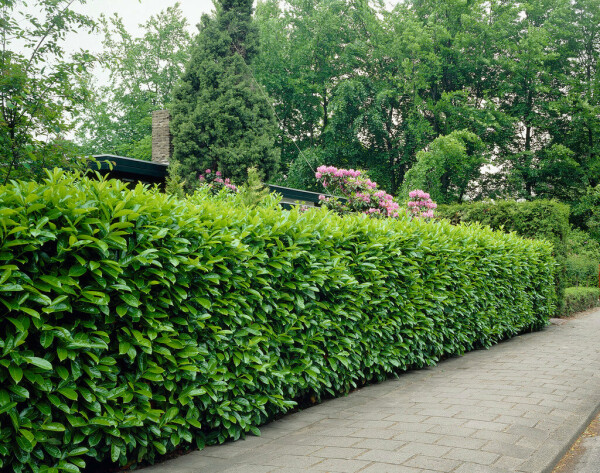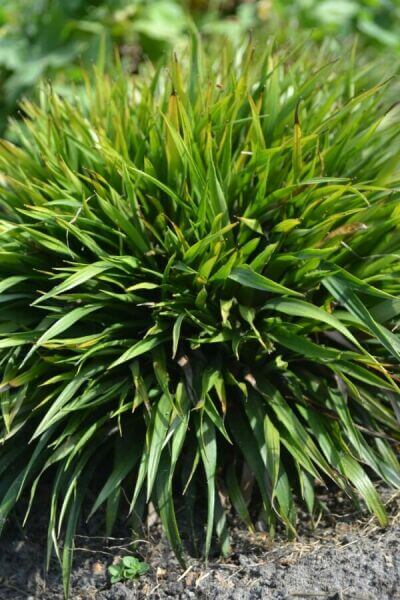Hedge Plants For Garden Design
Boost your garden's attraction with rich hedge ranges such as Yew (Taxus), Thuja, Laurel, Photinia, and Bamboo, celebrated for their structural integrity and environmental benefits.
Yew and Thuja supply evergreen protection and winter season durability, while Laurel offers rapid growth and broad, fragrant leaves.
Photinia includes seasonal appeal with its dynamic red foliage, and Bamboo lends a low-maintenance, tranquil ambiance.
These hedges improve air quality, reduce sound, and produce tranquil, private areas.
Proper planting, spacing, and maintenance make sure energetic growth and environmental consistency.
Explore how these rich ranges can raise your garden's beauty and well-being.
Key Takeaways
Transform Your Garden With Lush Hedge Ranges
- Select Yew for its thick, evergreen development and unrivaled durability.
- Opt for Laurel for its fast development and broad leaves, making sure fast personal privacy.
- Choose Photinia for its vibrant seasonal foliage, which turns a striking dark red.
- Use Bamboo for a low-maintenance, winter-hardy hedge with aesthetic appeal.
- Space plants 2-3 per meter and prune routinely for optimal growth and health.
Popular Hedge Plants
When transforming a garden with lush hedge varieties, it's necessary to consider popular hedge plants such as Yew, Thuja, Laurel, and Photinia due to their special qualities and advantages.
Yew (Taxus) is highly respected for its durability and thick, green development, making it a prime option for enduring landscapes.
Thuja is noted for its evergreen foliage and robust winter resilience.
Photinia adds seasonal vibrancy with red leaves that darken over time, creating dynamic visual appeal.
Laurel offers quick development and aromatic, broad leaves, suitable for quick privacy.
Furthermore, Bamboo is an exceptional option for ambiance, offering a low-maintenance, winter-hardy option that enhances the garden's visual with its sophisticated, swaying walking sticks.
These choices accommodate a variety of horticultural needs and choices.
Advantages of Garden Hedges
Garden hedges provide a wide variety of benefits, making them an important addition to any landscape. These natural barriers are cost-efficient to carry out and offer considerable wind protection, boosting air flow and contributing to sound decrease. The dense foliage of hedges like Thuja and Beech makes sure personal privacy by obstructing presence, producing a remote and peaceful environment.
Hedges also play a vital role in microclimate policy, providing a steady environment that promotes plant development and lessens temperature variations. Their complex leaf structures filter pollutants, enhancing air quality and contributing to a healthier garden environment.
Furthermore, hedges stand out in noise decrease, absorbing and deflecting sound waves to lower ambient sound levels. This double functionality of supplying both visual and acoustic personal privacy enhances the general harmony and aesthetic appeal of any garden.
Planting and Upkeep Tips
For an effective hedge, precise preparation of the planting area is important. Ensure the soil has appropriate pH and drain to support strong root development.
Area the plants appropriately for the selected types. Water the hedge frequently during its preliminary development stage, adjusting as required with seasonal changes.
Execute a organized pest control and disease prevention method, utilizing chemical or organic treatments when needed. Regularly inspect for aphids, termites, and fungal infections.
Apply mulch to retain moisture and reduce weeds. Seasonal pruning promotes dense growth and air flow, vital for plant health.
Following these standards will help you cultivate a vibrant, well-kept hedge that enhances the beauty of your garden.
Spacing and Trimming Standards
Spacing and Cutting Standards
Correct spacing and cutting are crucial for cultivating healthy, visually appealing hedges. Adequate spacing ensures each plant receives sufficient nutrients, light, and airflow.
Follow these guidelines for optimal hedge maintenance:
- Spacing: Position hedge plants 2-3 plants per meter to encourage robust development.
- Pruning Strategies: Routine pruning is necessary for keeping wanted hedge height and shape. Cut brand-new development in summertime and cut back older wood throughout winter season.
- Seasonal Care: Adjust trimming schedules and methods according to seasonal requirements to ensure plant health.
- Hedge Height: Frequently display and cut to keep the preferred hedge height and achieve uniform looks.
Adhering to these actions will guarantee your hedge prospers, improving both the appeal and functionality of your garden.
Picking the Right Hedge
Selecting the Right Hedge
Picking the suitable hedge involves evaluating aspects such as mature height, foliage density, and environmental strength. Successful hedge plant choice requires understanding each types' growth characteristics and site-specific flexibility.
For example, Yew (Taxus) uses outstanding longevity and thick growth, while Thuja is significant for its winter strength. Additionally, thinking about maintenance requirements is important; fast-growing species like Laurel or Privet need regular cutting, whereas low-maintenance options like Bamboo or Ivy may be preferable for those looking for minimal upkeep.
Ecological elements such as soil type, light schedule, and moisture conditions need to also assist the selection procedure. This mindful method makes sure the chosen hedges will prosper, supplying both functional and visual advantages to the garden landscape.
Delivery and Planting Recommendations
To ensure your hedge plants flourish, they must be provided by specialized couriers and planted quickly upon arrival.
Follow these necessary steps for successful planting:
- Soil Preparation: Enrich the soil with raw material to improve drainage and nutrient material.
- Planting Depth: Produce a trench two times the width and equal to the depth of the root ball.
- Watering Methods: Water completely after planting, keeping the soil consistently moist however not filled.
- Mulching: Use a layer of mulch to retain moisture and suppress weeds.
Client Assistance and Service
Offered the essential role of prompt support in horticultural pursuits, our consumer assistance team is offered 6 days a week through telephone, e-mail, and social media to offer expert guidance and quickly attend to any issues. Their devotion to fast action times makes sure consumer satisfaction by resolving queries related to plant health, optimal planting methods, and maintenance schedules.

Reaction Time
-------------------
Within 24 hours
This thorough support group, reinforced by an outstanding 9.3/ 10 client ranking, highlights our dedication to enhancing the gardening experience for every client.
Often Asked Questions
For How Long Does It Consider Hedge Plants to Develop?
Hedge plants normally need one to 3 years to end up being totally developed, with the exact duration varying by types and growing conditions.
Efficient care during this vital duration is vital for robust development. Consistent watering, watchful weed Additional hints control, and suitable fertilizer application are pivotal in promoting strong root development.
For example, fast-growing types like Laurel might develop quicker, while slower-growing ranges such as Yew might take longer. Persistent maintenance accelerates the facility procedure, resulting in healthy and thick hedges.
What Are the Best Hedge Plants for Privacy?
The question of the best hedge plants for personal privacy includes assessing evergreen and deciduous choices.
Evergreen hedges like Thuja, Laurel, and Cypress provide year-round protection, making sure constant privacy.
In contrast, deciduous hedges such as Beech use seasonal personal privacy, shedding leaves in colder months.
Secret maintenance suggestions for personal privacy hedges consist of regular trimming, fertilizing in spring, and proper spacing-- typically 2 to 3 plants per meter.
Additionally, constant watering and persistent weed removal are vital for promoting healthy, dense development.
Can Hedge Plants Draw In Wildlife to My Garden?
Yes, hedge plants can attract wildlife to your garden by supplying vital benefits like shelter, food, and nesting websites, thereby boosting local biodiversity. For instance, yew, holly, and laurel are exceptional for attracting birds, while ivy supports a range of bugs.
Nevertheless, it's essential to keep in mind that there are some disadvantages, such as increased upkeep to manage insects and regular upkeep. Thoroughly selecting and keeping hedge varieties can assist stabilize these drawbacks and benefits, eventually promoting a sustainable and dynamic environment in your garden.
Are There Any Blooming Hedge Plants Available?
Yes, there are flowering hedge plants readily available that can improve the appeal of your garden.
For instance, Elaeagnus, also referred to as Olive Willow, produces aromatic white flowers in the fall, adding a touch of beauty.
Photinia, another popular option, showcases lively red leaves that mature into a rich green, producing a vibrant visual result throughout the seasons.
To ensure these plants prosper, it's necessary to practice proper pruning methods and seasonal upkeep, such as cutting brand-new development in the summer and cutting back in the winter season.
These procedures will assist maintain the health and aesthetic appeal of your flowering hedges.
How Do I Prevent Insects in My Hedge Plants?
To prevent bugs in hedge plants, employ natural pest control techniques and preserve appropriate hedge care. Present helpful pests like ladybugs, which victimize harmful pests, to create a balanced ecosystem.
Regularly inspect your hedges for indications of problem and promptly get rid of any afflicted parts to prevent the spread. Ensure the health of your hedges by applying well balanced fertilizers and supplying appropriate water.
Make use of mulching to keep soil moisture and proper spacing to reduce plant stress and promote robust development. These practices jointly help in reducing pest issues and keeping a healthy hedge.
Conclusion
In essence, picking the ideal hedge varieties such as Yew, Thuja, and Laurel can change any garden into a relaxing haven. These plants provide year-round plant, boost visual appeal, and offer practical advantages like noise reduction and wind defense.
Proper planting methods, precise spacing, consistent watering, and seasonal trimming are vital for ideal development.
Trustworthy shipment services and expert client assistance make sure a smooth experience from purchase to planting, making it simpler than ever to elevate your outdoor space.
Garden hedges use a wide variety of benefits, making them an important addition to any landscape. These natural barriers are affordable to implement and offer significant wind security, boosting air flow and contributing to noise decrease. The thick foliage of hedges like Thuja and Beech guarantees personal privacy by obstructing presence, producing a tranquil and secluded environment.

Pruning Methods: Regular pruning is important for maintaining wanted hedge height and shape. Trim new development in summertime and cut back older wood during winter season.